Crusoe College has been fortunate to have worked with Professor David Hopkins (Emeritus Professor, University of London). As part of this work, a Crusoe Model lesson was developed and has been implemented to ensure high quality instruction is occurring in every class.
1. Clear learning protocols
- Students on time and on task
- Being prepared
- Grouping protocols
- Opportunity for all to be involved in discussion
2. Clear goals at the start of the lesson
- Defined time at the beginning of the lesson where there is a focus on the goals of the lesson
- Understanding/Knowledge for the lesson
- Tasks
- Personalised to the student
- Connect to assessment/understanding
- Extension/Continuum
- Verbally, on paper, projector, whiteboard
3. Differentiated Curriculum & Tasks
- Flexible groupings – different in different lessons
- Grouped by stage of development or understanding of the task
- Mixed ability, use of data
- Each group and task own purpose and learning goals
- Teaching group – teacher working with a small group of students – monitoring progress through discussion and questioning
Peer tutoring - Clear instructions – written down
- Use of thinking models and tools to elicit deeper levels of thinking
- Literacy expectations around accessing text for understanding across school
- Explicit literacy teaching
- Establishing prior knowledge
- Conceptual understandings
- Paraphrasing
- Summarising
4. Questioning
- Open ended, asked by teacher
- Wait time
- Teacher responds to students with further questioning to probe for further knowledge
- Encouraging questions from students
- Valuing all contributions
- Asking students what they think the answer may be
- Phrasing questions for higher order thinking
- Making questions inviting – What do you think some ways might be?
- Focus on understanding rather than knowledge and facts
5. Student Voice
- Provide choice in type of assessment to suit ability and interests
- Listen to student ideas with respect for the contribution – student confidence in raising questions
- Provide opportunities for students to excel
- Student led discussion
6. Positive interactions between students and teachers
- Teacher greeting at door – different students
- General talking
- Both questioning
- Smiling and good humour
- Group discussion
- Good body language – inclusive of all students
- Actively participate
- Talk with, not at
- Incorporate games that promote higher order thinking and engage
7. Reflection at the end of the lesson
- Asking the best thing about the lesson
- What they learnt, didn’t learn
- Clarify understanding
- Circle time
- Journal
- Peer Assessment, etc.
- Individual data


